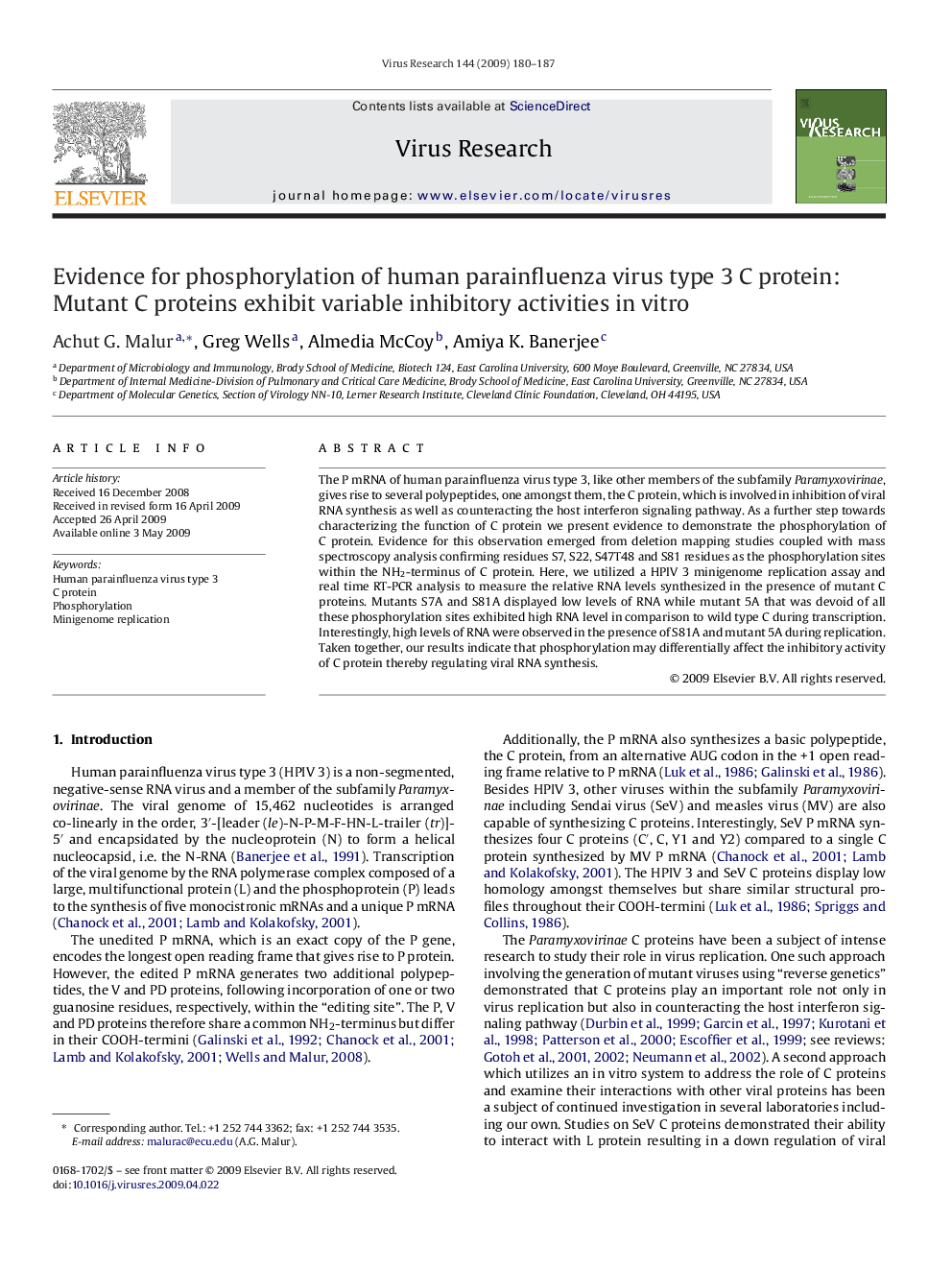| Article ID | Journal | Published Year | Pages | File Type |
|---|---|---|---|---|
| 3429675 | Virus Research | 2009 | 8 Pages |
The P mRNA of human parainfluenza virus type 3, like other members of the subfamily Paramyxovirinae, gives rise to several polypeptides, one amongst them, the C protein, which is involved in inhibition of viral RNA synthesis as well as counteracting the host interferon signaling pathway. As a further step towards characterizing the function of C protein we present evidence to demonstrate the phosphorylation of C protein. Evidence for this observation emerged from deletion mapping studies coupled with mass spectroscopy analysis confirming residues S7, S22, S47T48 and S81 residues as the phosphorylation sites within the NH2-terminus of C protein. Here, we utilized a HPIV 3 minigenome replication assay and real time RT-PCR analysis to measure the relative RNA levels synthesized in the presence of mutant C proteins. Mutants S7A and S81A displayed low levels of RNA while mutant 5A that was devoid of all these phosphorylation sites exhibited high RNA level in comparison to wild type C during transcription. Interestingly, high levels of RNA were observed in the presence of S81A and mutant 5A during replication. Taken together, our results indicate that phosphorylation may differentially affect the inhibitory activity of C protein thereby regulating viral RNA synthesis.
